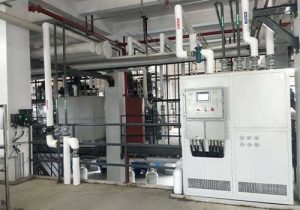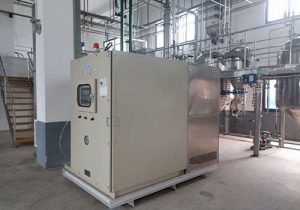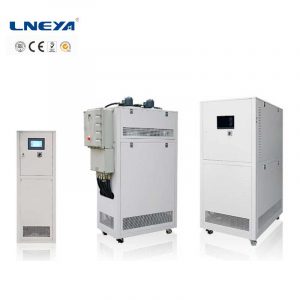water chilling systems
Introduction to Water Chilling Systems
Water chilling systems are central cooling systems that utilize chilled water as a medium to transfer heat away from spaces or equipment. The heart of these systems is the chiller, a refrigeration machine that cools the water to a low temperature. The chilled water is then circulated through a network of pipes, transferring heat from the surrounding environment and providing cooling wherever it is needed.

Principles of Water Chilling Systems
The basic working principle of a chiller is similar to the air conditioner used in homes, following four refrigeration processes: compression, condensation, expansion, and evaporation. Essentially, a chiller can be viewed as a giant air conditioner that cools water instead of directly cooling the air.
Types of Water Chilling Systems
Water chilling systems can be categorized based on the type of chiller used:
Air-Cooled Chillers: These chillers dissipate heat through outdoor air, similar to regular air conditioners.
Water-Cooled Chillers: These chillers use water and require the assistance of cooling towers to dissipate heat.
Applications of Water Chilling Systems

Water chilling systems find extensive application in various sectors due to their versatility and efficiency:
Commercial Buildings: They are crucial in commercial buildings like offices, malls, hotels, and hospitals for cooling large spaces and maintaining comfortable temperatures.
Industrial Processes: They play a vital role in numerous industrial processes where heat dissipation is crucial, such as manufacturing, pharmaceuticals, data centers, and food processing.
HVAC Systems: Heating, Ventilation, and Air Conditioning systems often incorporate chilled water systems for cooling purposes, providing efficient cooling to air handling units and precise temperature control.
Power Generation: Chilled water systems are crucial in power plants, especially thermal power generation, for cooling turbines, generators, and other equipment.
District Cooling: In densely populated areas, district cooling systems provide centralized cooling to multiple buildings through an underground network of pipes.
Efficiency of Water Chilling Systems
The efficiency of water chilling systems is a critical factor in energy consumption. High-efficiency systems can significantly reduce energy use and costs. Recent developments in zero-energy buildings have focused on improving the energy efficiency of these systems through the use of renewable energy technologies, such as solar energy installations, wind turbines, and geothermal heat exchangers.
Safety Considerations in Water Chilling Systems

Safety is a paramount concern in the design and operation of water chilling systems. Proper maintenance, regular inspections, and adherence to safety standards are essential to prevent accidents, such as fires or carbon monoxide poisoning. The use of smart controls and advanced diagnostics can enhance the safety of these systems.
Market Trends in Water Chilling Systems
The market for water chilling systems is evolving with a focus on energy efficiency and sustainability. There is a growing trend towards the use of renewable energy sources and hybrid systems that can respond flexibly to changing energy demands. The integration of heat recovery systems and absorption chillers is also becoming more common, as they offer significant energy savings.
Latest Advancements in Water Chilling Systems
Recent advancements in water chilling systems include the development of more efficient heat pumps, the use of phase change materials for thermal storage, and the integration of smart controls for optimal system performance. The concept of zero-energy buildings has become more realistic with the push towards renewable and diversified energy sources.
Conclusion
Water chilling systems are fundamental to modern cooling applications, providing efficient and reliable solutions across various industries. Understanding their principles, types, applications, and the latest advancements is crucial for selecting the appropriate system for a given application. As technology continues to advance, the efficiency and capabilities of water chilling systems will continue to improve, meeting the growing demands of diverse industries.
Related recommendations
Battery Pack Test Water-Cooled Chiller System
1394Battery Pack Test Water-Cooled Chiller System The battery pack test water-cooled chiller system can realize the digitization of key experimental parameters in the entire reaction process and ...
View detailsChemical Reactor Refrigeration Heating Temperature Control System
1140Chemical Reactor Refrigeration Heating Temperature Control System Good working conditions can only be achieved when the refrigeration and heating temperature control device is installed and ...
View details40 ton air cooled chiller
630A Comprehensive Guide to 40 Ton Air Cooled Chillers A 40 ton air cooled chiller is a powerful cooling device that plays a crucial role in maintaining comfortable temperatures and ensuring the p...
View detailsInstructions for Use of Heater Chiller Circulator
1323Instructions for Use of Heater Chiller Circulator Heater Chiller Circulator is a temperature control device that integrates refrigeration and heating. It is a dual-purpose temperature contr...
View details
 LNEYA Chiller
LNEYA Chiller







HelloPlease log in